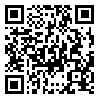دوره 14، شماره 2 - ( 12-1401 )
جلد 14 شماره 2 صفحات 262-247 |
برگشت به فهرست نسخه ها
Download citation:
BibTeX | RIS | EndNote | Medlars | ProCite | Reference Manager | RefWorks
Send citation to:



BibTeX | RIS | EndNote | Medlars | ProCite | Reference Manager | RefWorks
Send citation to:
Kumar H, Kulkarni G, Diwan V, Sharma B. Shielding Effect of Ryanodine Receptor Modulator in Rat Model of Autism. BCN 2023; 14 (2) :247-262
URL: http://bcn.iums.ac.ir/article-1-1966-fa.html
URL: http://bcn.iums.ac.ir/article-1-1966-fa.html
Shielding Effect of Ryanodine Receptor Modulator in Rat Model of Autism. مجله علوم اعصاب پایه و بالینی. 1401; 14 (2) :247-262
چکیده:
Introduction: A neurodevelopmental disorder, autism is typically identified with three primary behavioral consequences, such as social impairment, communication problems, and limited or stereotypical behavior. Because of its co-morbidity and lack of therapeutic options, autism is a global economic burden. A short chain of fatty acid, propionic acid is formed biologically by the gut microbiome. Propionic acid levels that are too high can cause leaky intestines, which can lead to autism-like symptoms.
Methods: To induce autism, male Albino Wistar rats were given propionic acid (250 mg/kg/po on the 21st, 22nd, and 23rd postnatal days). Rats also received a ryanodine receptor antagonist (Ruthenium red: 3 mg/kg/po; postnatal 21st to 50th day) to see what influence it had on propionic acid-induced autism. Anxiety, social behavior, and repeated behaviors were all assessed, as well as oxidative stress, inflammatory indicators, neuro signaling proteins, and blood-brain barrier permeability.
Results: Ruthenium red was found to counter the propionic acid-induced increases in anxiety, repetitive behavior prefrontal cortex levels of IL-6, TNF-α, TBARS, Evans blue leakage, and water content along with decreases in social behavior, IL-10, and GSH followed by hippocampus CREB and BDNF levels.
Conclusion: Ryanodine receptor antagonists presented a neuroprotective effect in propionic acid-induced conditions like autism by modulatory effects on social and repetitive behavior, oxidative stress, neuroinflammation, and neuroprotein changes. Ryanodine receptors can be further explored in depth to manage autism as a condition.
Methods: To induce autism, male Albino Wistar rats were given propionic acid (250 mg/kg/po on the 21st, 22nd, and 23rd postnatal days). Rats also received a ryanodine receptor antagonist (Ruthenium red: 3 mg/kg/po; postnatal 21st to 50th day) to see what influence it had on propionic acid-induced autism. Anxiety, social behavior, and repeated behaviors were all assessed, as well as oxidative stress, inflammatory indicators, neuro signaling proteins, and blood-brain barrier permeability.
Results: Ruthenium red was found to counter the propionic acid-induced increases in anxiety, repetitive behavior prefrontal cortex levels of IL-6, TNF-α, TBARS, Evans blue leakage, and water content along with decreases in social behavior, IL-10, and GSH followed by hippocampus CREB and BDNF levels.
Conclusion: Ryanodine receptor antagonists presented a neuroprotective effect in propionic acid-induced conditions like autism by modulatory effects on social and repetitive behavior, oxidative stress, neuroinflammation, and neuroprotein changes. Ryanodine receptors can be further explored in depth to manage autism as a condition.
نوع مطالعه: Original |
موضوع مقاله:
Behavioral Neuroscience
دریافت: 1399/7/23 | پذیرش: 1400/3/23 | انتشار: 1401/12/10
دریافت: 1399/7/23 | پذیرش: 1400/3/23 | انتشار: 1401/12/10
| بازنشر اطلاعات | |
 |
این مقاله تحت شرایط Creative Commons Attribution-NonCommercial 4.0 International License قابل بازنشر است. |





